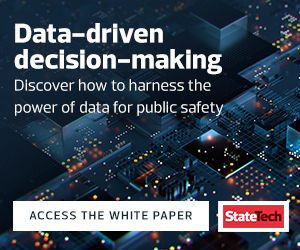1. Focus on Cleansing Data Internally
Fusion center analysts are using social media streams, intelligence reports, news stories and other sources to inform operational and policy decisions at various levels of government. It is therefore critical for their analysts to ensure that the data and information they collect are clean, accurate and complete.
That’s not easy. Sometimes the data arrives in structured and unstructured bits and chunks from disparate sources. Other times, it’s replete with “eyes only” information meant for certain classification levels.
Analysts must cleanse the data by eliminating duplicate information, de-identifying sensitive data elements, merging data sets, and normalizing and geocoding addresses for mapping to effectively identify trends, patterns and anomalies. This process involves not only taking out top secret intelligence to establish handling classification levels, but also ensuring that federal data privacy laws are always adhered to.
Data has a shelf life and must remain complete and timely. Incomplete data sets can cause certain criminal activities to be underrepresented, which can lead to law enforcement agencies either over- or underestimating threats and ineffectively allocating resources. Data must also be fresh and relevant; agencies can’t afford to rely on outdated information, especially when dealing with rapidly unfolding events. Yet keeping data for historical learning and longitudinal studies is also important.
Data management is by far the most time- and resource-consuming fusion center process. It is essential to use technology to shorten the data-to-action timeline and ensure appropriate storage and access — especially during emergent situations.
DIVE DEEPER: Follow these best practices when setting up a fusion center.
2. Apply AI Tools to Better Analyze Data
Only after data is synergized and prepared can fusion centers begin using artificial intelligence models to make more informed and accurate recommendations to help state and local partners address crises and inform policy decisions.
Developing those conclusions requires a combination of storage, connectivity and computing power. Persistent memory storage solutions are designed specifically for AI.
This technology provides a way to hold massive amounts of data — in some cases, up to several terabytes in memory — to process very demanding workloads that provide results in minutes, not hours. In concert with persistent memory, data can be processed using high-performance computing clusters that create in-depth simulations and models, allowing analysts to derive better and faster intelligence from complex data sets. Finally, 5G wireless connectivity provides the ideal conduit for data sets to be delivered to the fusion center quickly, effectively supporting the need for real-time decision-making in the event of a crisis.
Some crises, such as terrorist attacks, are sudden and unexpected. Other situations, such as an approaching hurricane, may be anticipated but can still overwhelm resources and become a crisis. Still others, such as the opioid epidemic, can be persistent. Fusion centers can use the power of data and AI to identify opioid hotspots to target preventive services to those areas, which is what the New Jersey fusion center has done over the past couple of years.
Fusion centers can even use data to discover the sources of problems, such as illicit fentanyl distributors and pharmacies that overprescribe opioids or other drugs. Local agencies can use this information to interdict sources and mitigate the impact of drugs in affected areas, while more effectively deploying treatment resources and prioritizing treatment for those most in need.














